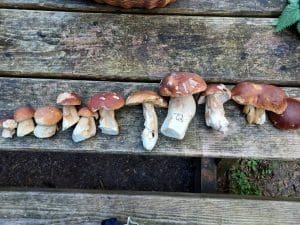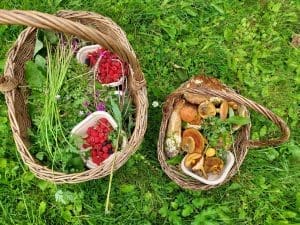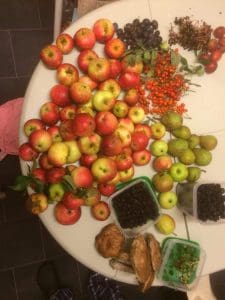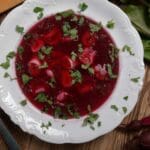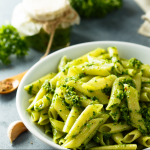Traditionally the first of August marks Lammas day which signals the start of the harvest season which is perfect for foraging in August. The Anglo-Saxon name for August was Vueod-Monath which means weed month, as this is the time when they grow most abundantly, making it a particularly good month for foraging, gathering and preserving.
So what can you forage in August? Here are our top five picks for the month.
Hazelnuts
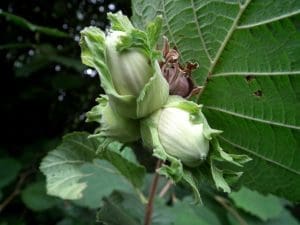
A common tree in the UK, that’s loved by foragers and squirrels alike. The nuts have to be picked slightly unripe as they will be taken by the local squirrels over wise. They can be used ‘green’ or left in a dark place for a couple of weeks to ripen.
Click here for the ID guide for Hazel.
Blackberry
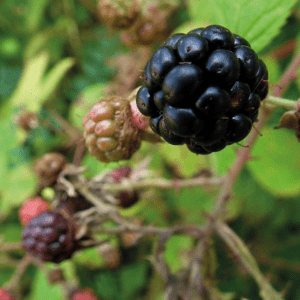
A very beginner friendly plant that most of us are familiar with. Packed full of vitamins and minerals they really are a ‘superfood’. Folklore says that blackberries should not be picked after Old Michaelmas Day (11 October) as the devil has made them unfit to eat by spitting or fouling on them, so get them while they’re still good.
Click here for the ID guide for Blackberry.
Apple

Again very beginner friendly, if it looks like an apple it’s an apple, although whether it’s one that’s sweet enough to eat straight from the tree is down to your personal taste buds. The true crab apple is getting harder to find, most you’ll come across in the wild are technically feral having grown from the discarded cores of cultivated varieties.
Click here for the ID guide for Apple.
Porcini
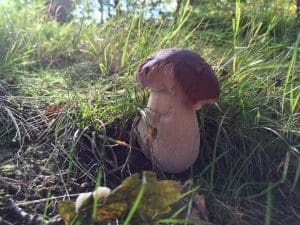
One of my favourite wild mushrooms, they tend to start fruiting in August. As well as being one of the tastiest it’s also one of the easiest to ID. Unlike many wild mushrooms they can be eaten raw or cooked and the flavour becomes even more intense when they are dried.
Click here for the ID guide for Porcini.
Sea Purslane

A lovely and common coastal plant, it’s available most of the year but in August the flowers and seeds are at their best. Add them to Asian style soups and stews for an amazing salty/umami pop of flavour. Normally found on mudflats and estuaries, there’s very little that you could confuse it with.
Click here for the ID guide for Sea Purslane
Recipe for Foraging in August
Wild Mushroom & Wild Greens Chickpea Frittata
A vegan frittata packed full of delicious wild garlic and wild mushrooms, it is great for summertime picnics and lunches! The recipe is pretty flexible and you can include any wild greens or mushrooms that you have available.

Ingredients:
- 250g cup chickpea (gram) flour
- 2 tablespoons nutritional yeast
- 2 teaspoons lacto-fermented wild garlic (or 1 teaspoon garlic powder)
- 1 teaspoon baking powder
- 1/4 teaspoon sea salt
- A couple of springs of wild marjoram or thyme (or other herbs of choice)
- 75ml water
- 1 onion (or 3-4 spring onions), chopped
- 200g fresh wild mushrooms, roughly chopped
- A handful of dried porcini mushrooms, soaked in boiling water for ~20 mins, then chopped
- A couple of handfuls of wild greens (e.g. dandelion leaves, fat hen, chickweed, garlic mustard)
Method:
- Preheat oven to 180°C/Gas 4 and lightly grease or line a shallow loaf or pie tin
- In a large bowl, mix the chickpea flour, nutritional yeast, garlic, baking powder and salt.
- Slowly whisk in water until combined and smooth. Add the fresh (or dried) herbs.
- Heat olive oil in a large frying pan to a medium-high heat. Add the onion/spring onion and stir fry for 4 to 5 minutes until softened.
- Add the chopped mushrooms, and allow to cook for a further 5 minutes until softened
- Finally add the wild greens and cook briefly to allow to wilt (~1 minute)
- Remove from heat and stir into the chickpea batter.
- Pour into the prepared baking dish and bake in a preheated oven for 25 to 30 minutes until set in center and slightly browned on top.
- Remove from the oven, allow to cool in tin for about 10 minutes on a cooling rack then turn out (using a knife if needed). Serve warm, room temperature or chilled.
Click here for more Summer recipes
What to forage in July.
Foraging in July is typically the warmest month of the year, the hot weather can make finding fresh greens more difficult as plants focus their energy into producing flowers and fruits. Depending on weather conditions there are a few gourmet mushrooms around too.
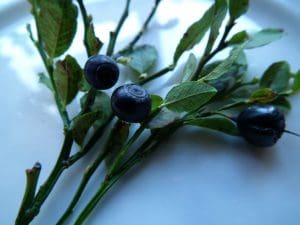
What to Forage in September.
Foraging in September is brilliant, September marks the end of summer and the beginning of autumn, it’s the month for berries, nuts and seeds. The wetter weather also marks the beginning of ‘mushroom season’ and you’ll see fungi springing up almost everywhere you look.
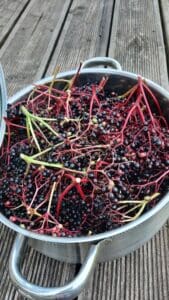
Enjoy and Happy Foraging



